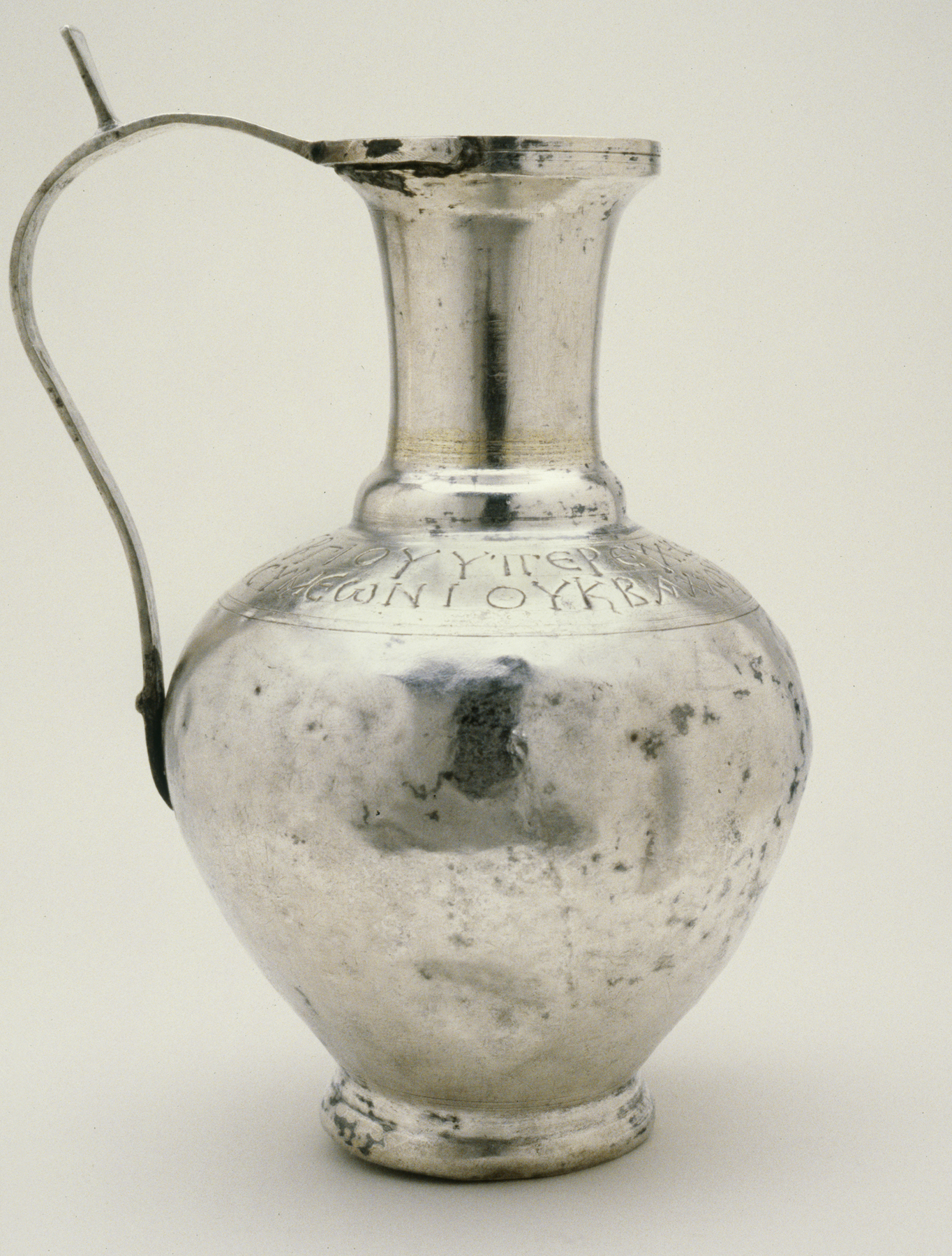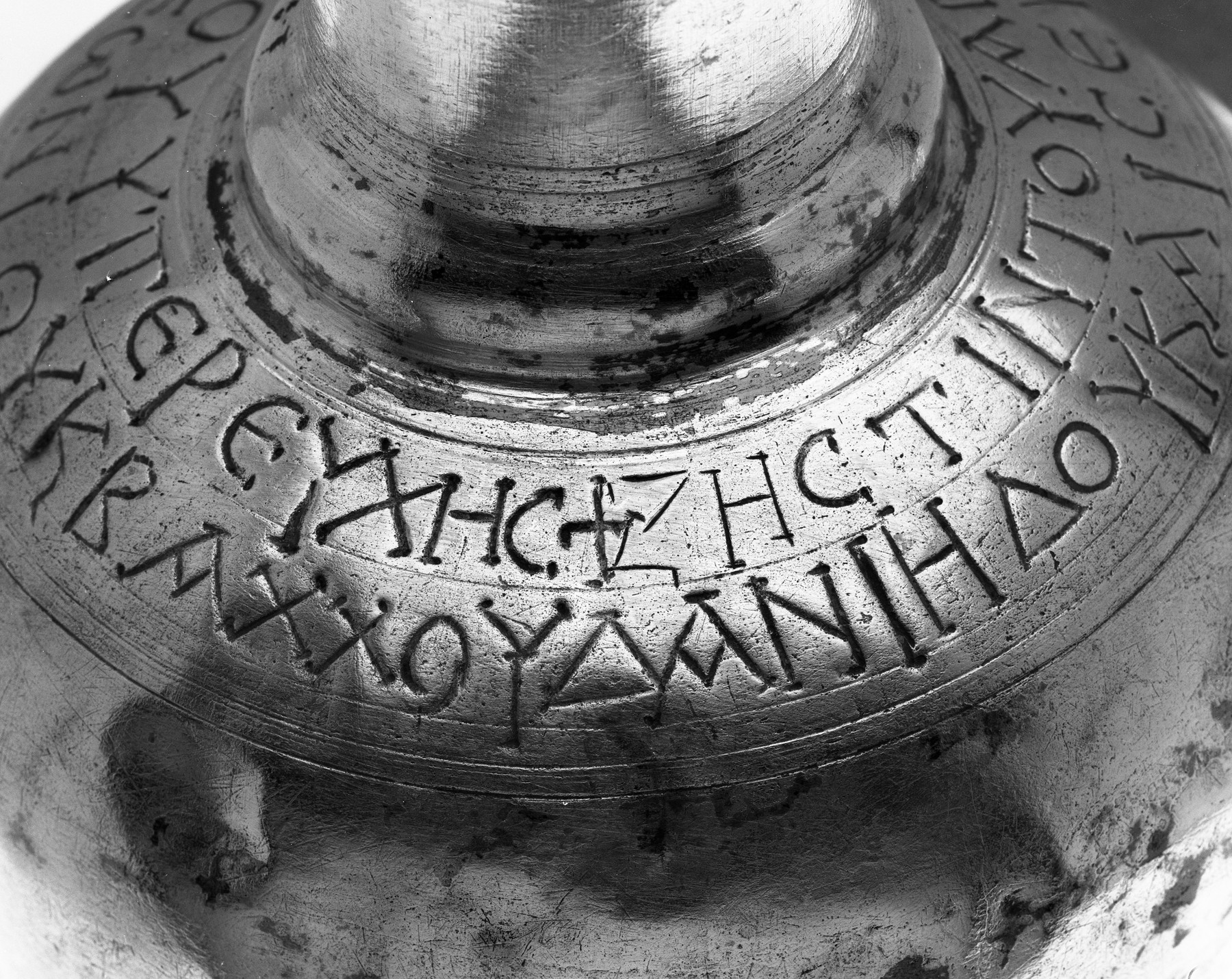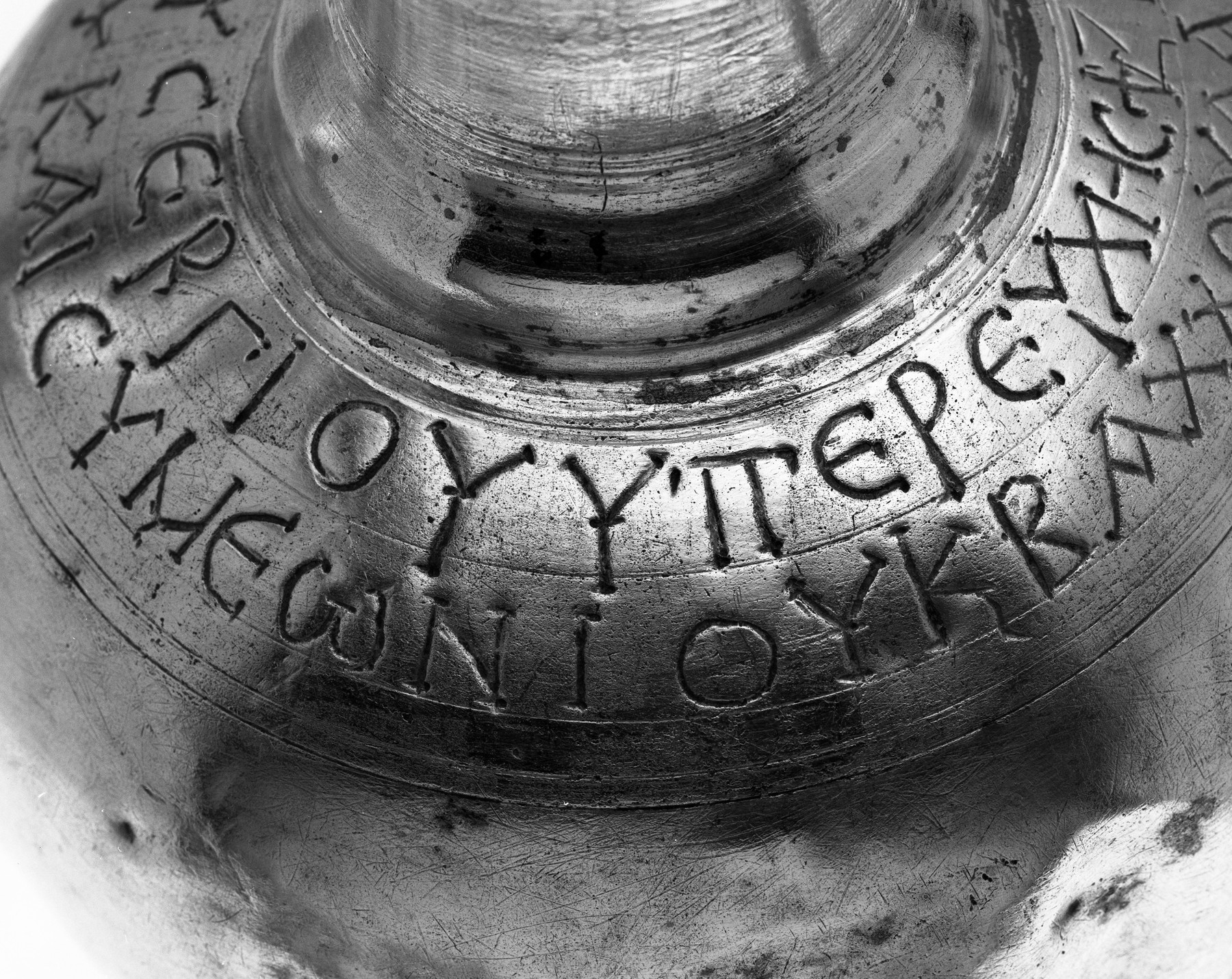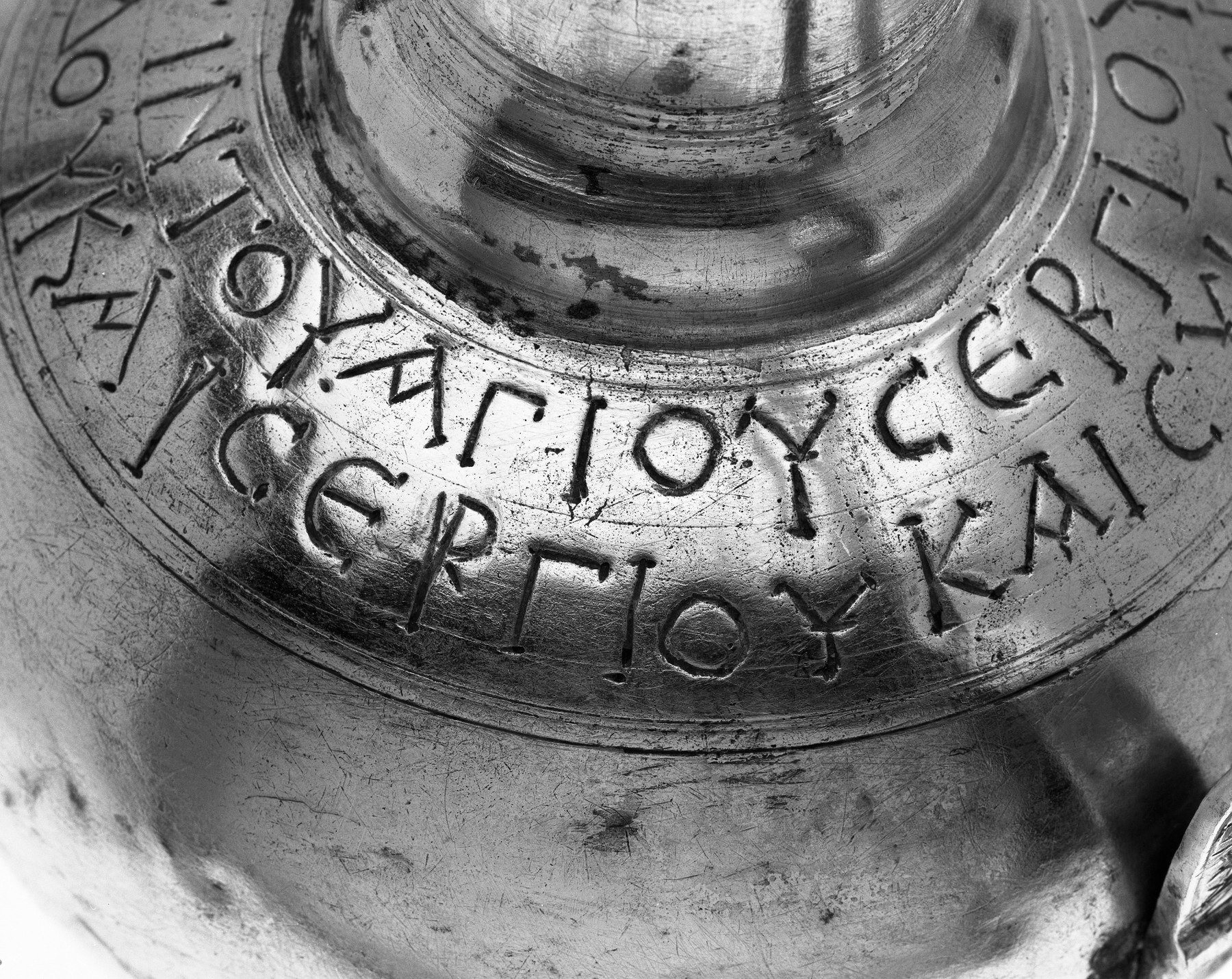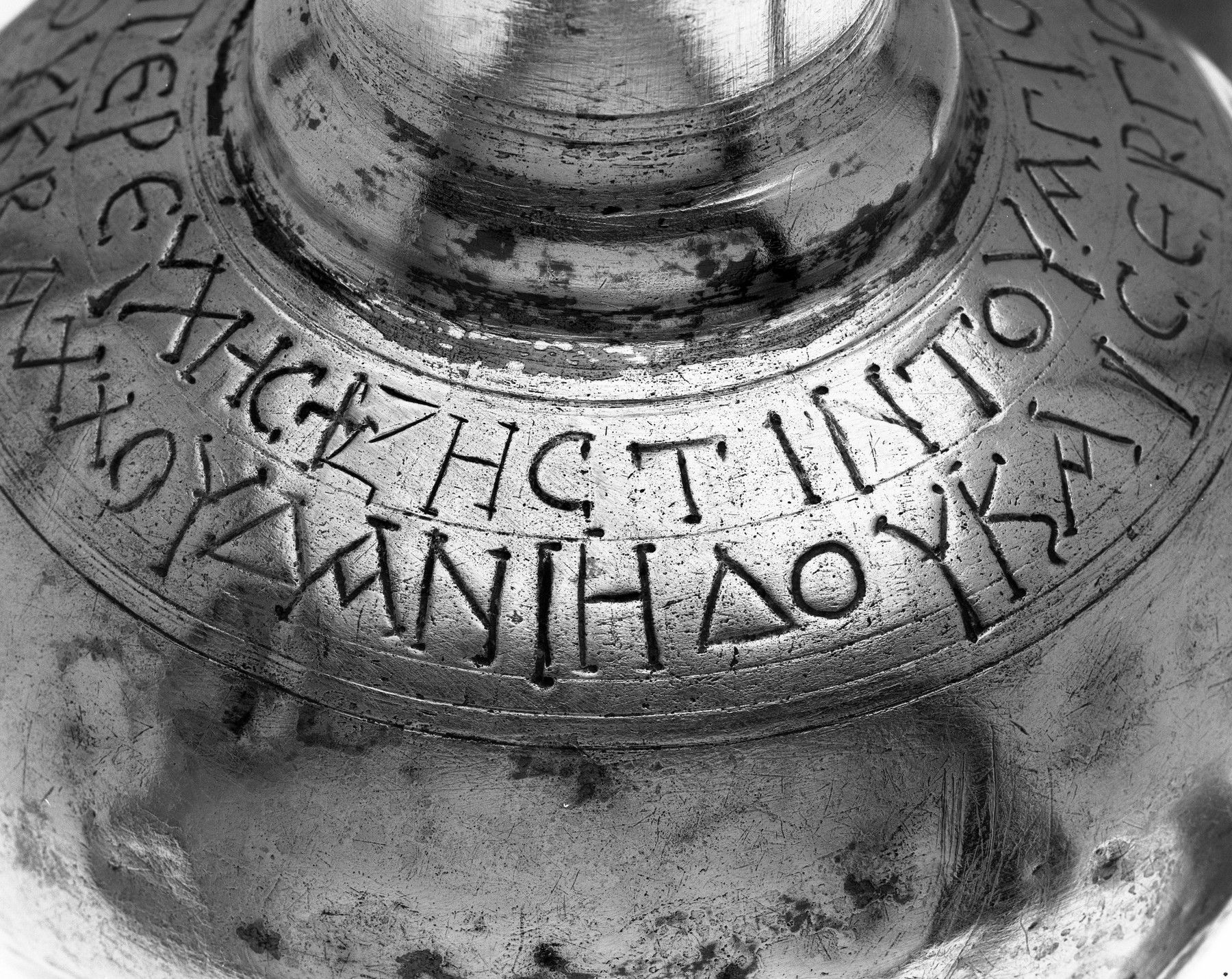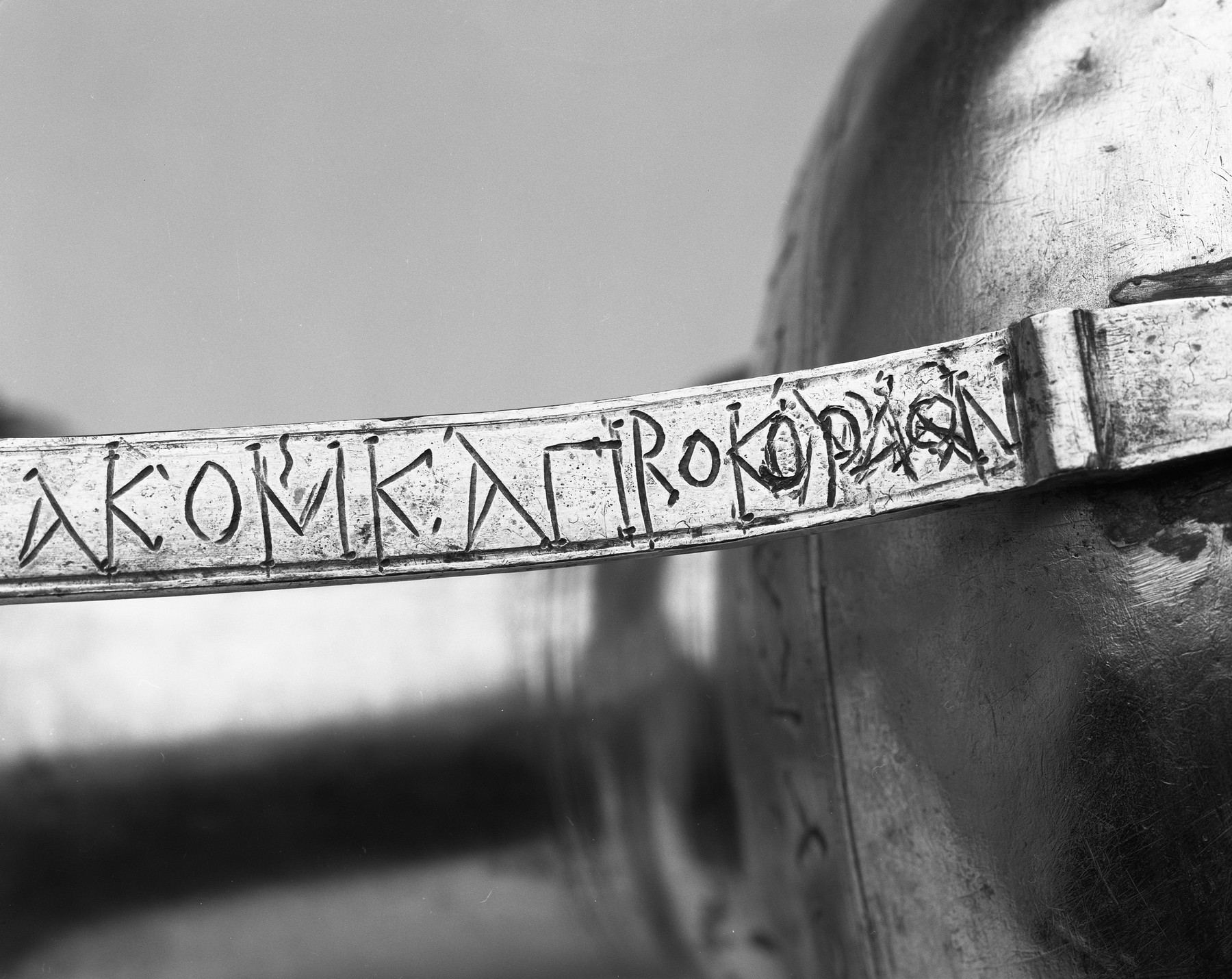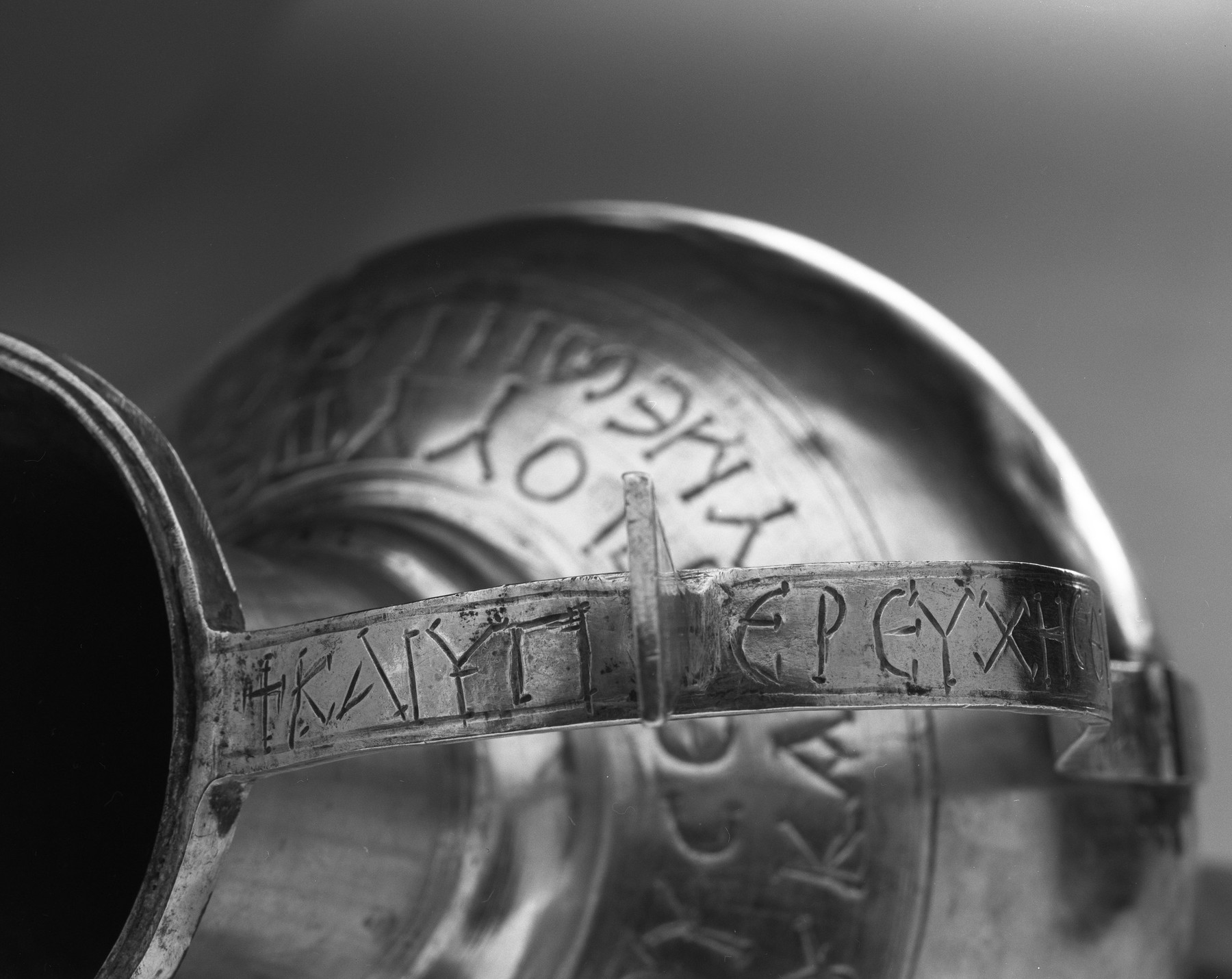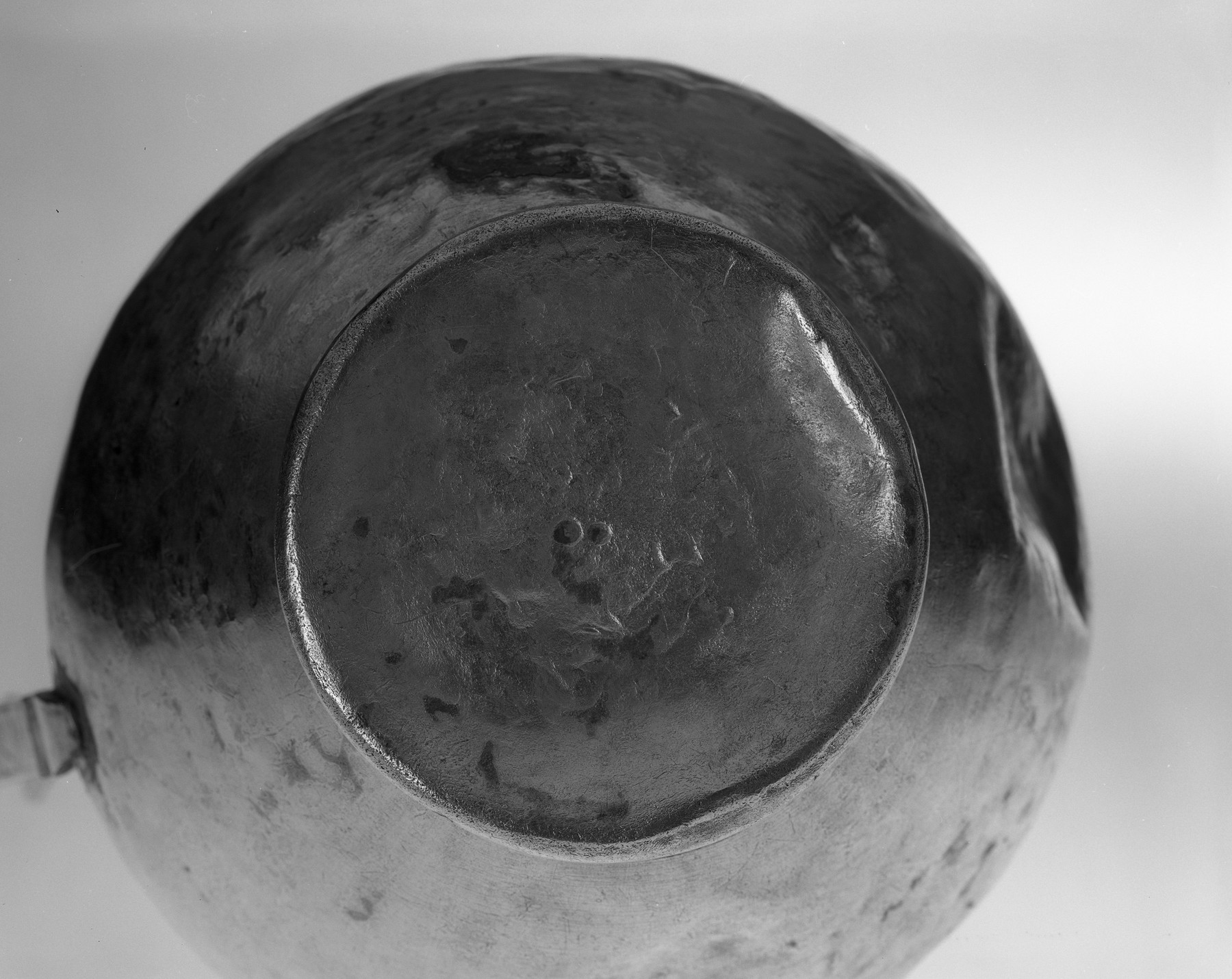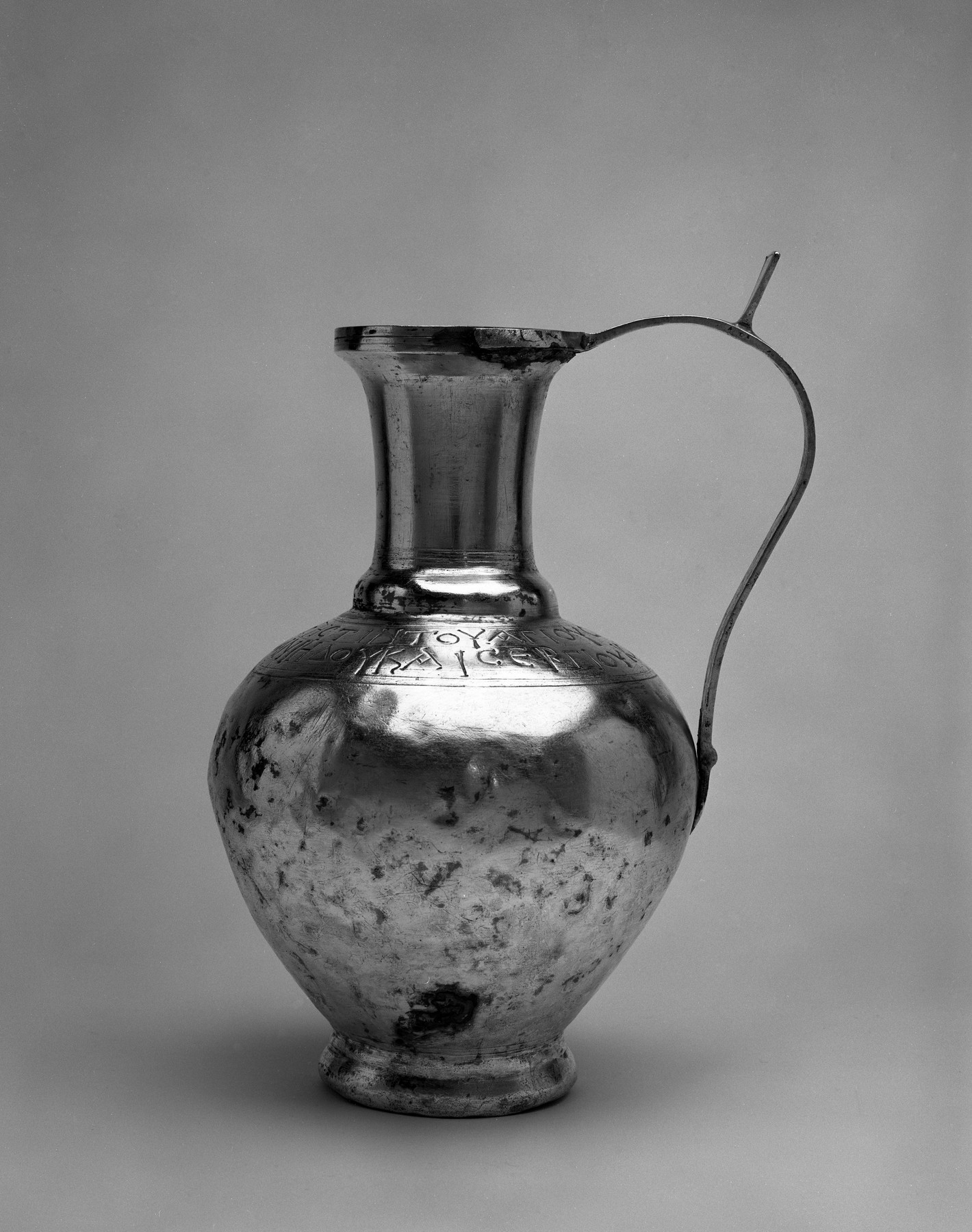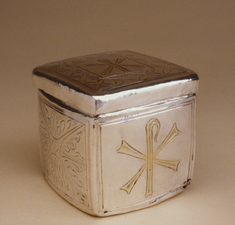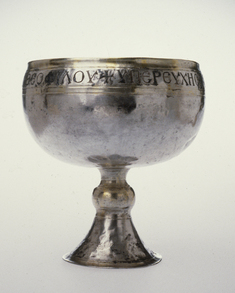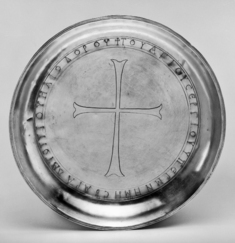Ewer
(Byzantium and Early Russia)
The celebration of the Divine Liturgy is one of the most important ceremonies in the Christian Church. This ewer is part of a silver service (with Walters 57.634, 57.635, 57.642, 57.644, 57.649, 57.646, 57.650, and 57.638) that is one of only four to survive from the first "golden age" of Byzantium (6th century).
Each of the vessels in this service performed a sacred function in the liturgical service. Small ewers (pitchers) and bowls held water for ritual hand-washing.
This silver service was found in Syria in 1910, in the village of Kurin. The Greek form of its name, Kaper Koraon, is inscribed on several pieces in the treasure, including a chalice, which reads: "...treasure of the Church of St. Sergios of the village of Kaper Koraon." Almost all of the vessels record the names of donors who gave pieces from their private dinner services in fulfillment of a vow, to gain divine blessing, or in prayer for salvation.
Inscription
Provenance
Provenance (from the French provenir, 'to come from/forth') is the chronology of the ownership, custody, or location of a historical object.
[Excavated in Syria, 1908-1910]; Tawfic Abucasem, Hama and Port Said, ca. 1913, by purchase; Joseph Brummer, Paris, ca. 1928, by purchase; Henry Walters, Baltimore, 1929, by purchase; Walters Art Museum, 1931, by bequest.
Exhibitions
| 1986 | Silver Treasure from Early Byzantium. The Walters Art Gallery, Baltimore. |
| 1947 | Early Christian and Byzantine Art. Baltimore Museum of Art, Baltimore. |
Measurements
H at top of handle tip: 10 9/16 x W: 6 3/16 x D: 7 7/8 in. (26.9 x 15.7 x 20 cm); Diam of mouth: 2 15/16 in. (7.5 cm); Diam of foot: 3 3/16 in. (8.1 cm)
Credit Line
Acquired by Henry Walters, 1929
Location in Museum
Accession Number
In libraries, galleries, museums, and archives, an accession number is a unique identifier assigned to each object in the collection.
In libraries, galleries, museums, and archives, an accession number is a unique identifier assigned to each object in the collection.
57.645

